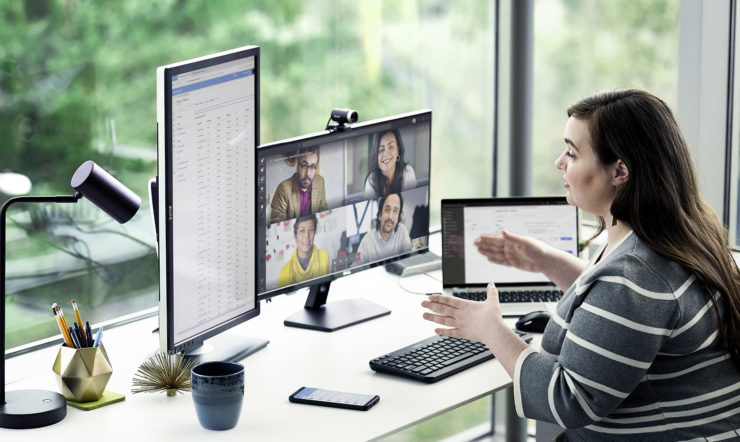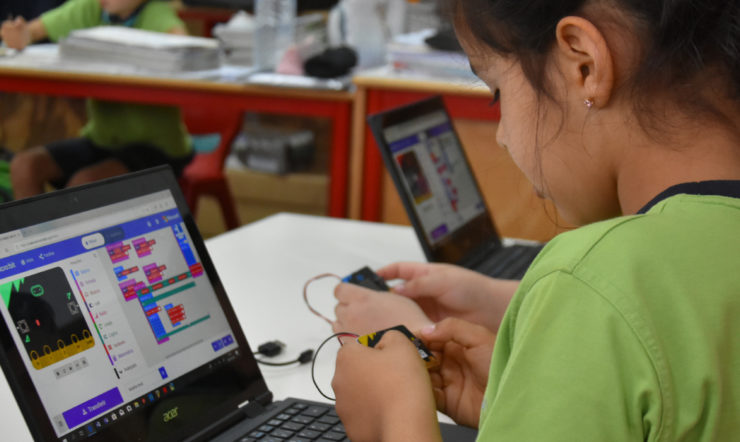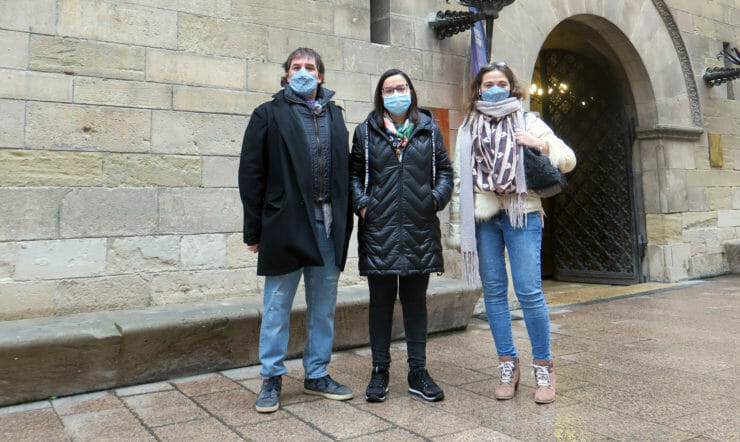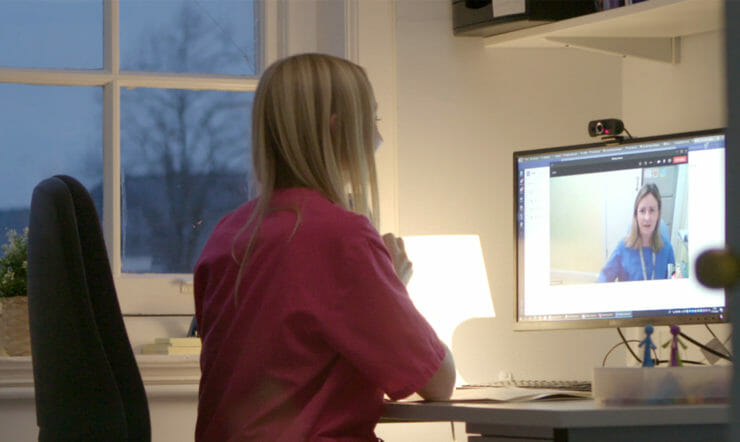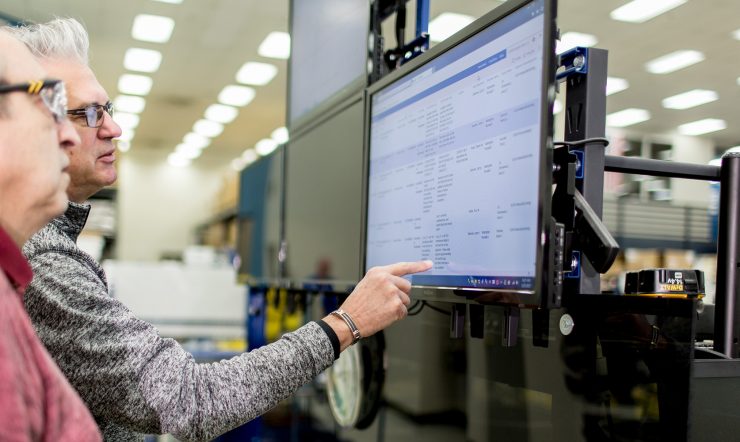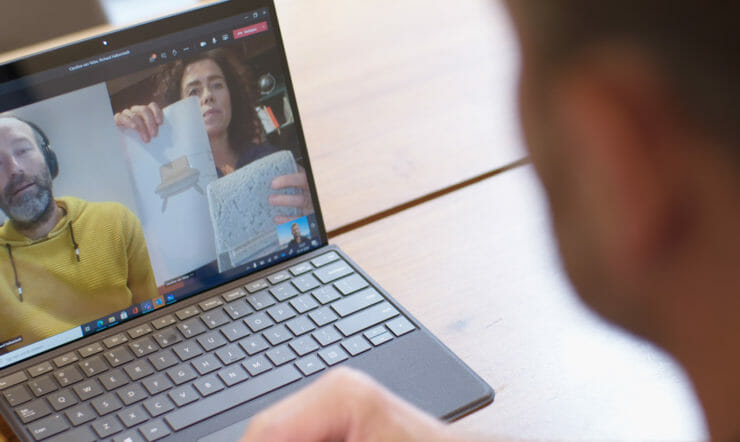In 2021, companies across the world are integrating remote work models into their long-term workforce strategies. A global, hybrid work landscape combining in-office, at-home, and mobile workforces has arrived. Microsoft Teams and Surface devices are supporting the hybrid experiences each team member needs to participate on equal footing—no matter when or from where they choose to connect.
According to Forrester[1], 70% of U.S. and European companies are pivoting to a post-pandemic hybrid work model—only 30% will embrace a full return-to-office model. “Distributed” teams will become common and expected, with new challenges and opportunities in how we connect and collaborate.
These digital spaces do well to facilitate conversations. But optimizing meetings for distributed teams is more complex. Depending on the meeting size, the software involved, and the users’ familiarity with the meeting format, the results can be unpredictable and fall short of expectations. Repeatedly poor execution of meetings can leave employees feeling isolated, undervalued, and despondent instead.
Just as the “office” is transforming conceptually, we must reimagine meetings of all types and sizes—from the huddle, to the boardroom, to the company-wide town hall. Here we explore how Microsoft Teams meetings, Teams Rooms, Surface Hub, and our broader suite of Surface devices are transforming meetings into seamless experiences, merging the best of both virtual and physical worlds.
The State of the Meeting for Today’s Workforce
Business leaders are coming to terms with the benefits and challenges of hybrid work environments, where some or all employees are working remotely—entirely, partially, or on an optional basis. This not only increases the complexity of corporate IT environments, but it also means teams need more flexible, productive, and secure methods to interact effectively with distributed colleagues.
Unfortunately, many employees feel less connected to their colleagues since shifting to remote work. Consider this: When team members participate in in-person meetings, they can pick up on nonverbal interactions and cues from other participants more easily. A sense of comradery and closeness may be easier to achieve. This is especially valuable when deciding on one’s tone, one’s choice of words, or one’s methods for collaborating and sharing.
Most Digital Meetings Tools Fall Short
Most meeting-room technologies simply don’t address unique pain points associated with distributed teams. Employees have varying levels of expertise with these platforms. Colleagues often use multiple systems that add complexity for employees and both costs and vulnerabilities for company leaders.
Worst of all, these platforms don’t support the social connections, support, and friendships common to physical workplaces. Far from secondary, studies[2] show these elements are critical to employee satisfaction and performance. Remote workers report greater feelings of isolation and loneliness, and they struggle to replicate causal, spontaneous conversations with individual colleagues or groups.
In today’s hybrid work environment, these feelings of anonymity have real implications for emotional health and performance. Findings from Microsoft’s 2020 study[3] on the future of work show that remote workers often don’t feel like equal participants in meetings with colleagues who are sharing physical spaces. They are more likely to suffer from connection problems, dropped audio, or pixelated or frozen images, exacerbating their isolation and their inability to participate.
Closing the Collaboration Gap with Microsoft Teams and Surface Devices
After more than 30 Microsoft-led research projects and both partner and customer conversations, it’s clear: There is real value in embracing hybrid work environments, and optimizing meetings for today’s employees. Microsoft Teams hybrid meetings solutions and Surface devices can close the persistent collaboration gap among today’s distributed teams.
For example, Surface Hub 2S enables fluid collaboration, bringing remote and in-office teams together via Microsoft Whiteboard and integrated Microsoft 365 apps. Furthermore, physical tools like Mobile Stand and APC™ Charge Mobile Battery help bridge the interactive divide between in-office and remote experiences as well.
Surface Hub allows companies to bridge the distance between remote team members with a powerful meetings and collaboration platform that’s Microsoft Teams-certified, whether their meeting room is for smaller teams or for a large-room experience. In vibrant and clear life-sized video, users will feel like remote team members are in the room with them on the brilliant, 4K screen.
Meanwhile, Microsoft Teams meetings support live chat and collaboration on shared content, even for team members who can’t attend a meeting in progress. Pinned messages and transcriptions with speaker attribution in recordings ensure team members can access the value of meetings after the fact.
Bringing a Human Connection Back to Meetings
One critical lesson from the COVID-19 pandemic is that “organizations play a bigger role in employee wellness than previously understood,” as Forrester describes.
“By shifting conversations to focus on the working environments that best suit employees’ needs moving forward, organizations can ensure that their employees feel they are being heard and that they have the autonomy and tools to do their jobs effectively.”
Fortunately, successful collaboration and meaningful human connections needn’t depend on physical proximity. Here is a look at how Microsoft Teams meetings, Teams Rooms, Surface Hub, and our broader suite of Surface devices can optimize collaboration and support wellness for distributed workforces; as well as cost savings, efficiencies, and better security for employers:
Keep People Connected
With Microsoft, employers can ensure everyone can be seen and be heard clearly with high-quality audio and video. Purpose-built features, designed to increase engagement and presence in meetings, improve interactions to build team members’ closeness and shared understanding. Teams can cultivate real-time collaboration with dynamic tools. They can maintain these experiences across multiple devices, enabling employees to participate in the flow of work no matter how they choose to connect.
Collaborate Without Compromise
Managers can ensure collaboration is fluid by providing every person with equal presence and participation. Participants clearly understand who is presenting, hosting, and participating in meaningful capacities, as well as the value of the touchpoints they share with each other. Team members who cannot be in attendance can nonetheless access robust resources—transcriptions, recordings, and automated highlights—so they too have a shared understanding of how each meeting progressed.
Scale as Needed, as Far as You Want to Go
With Microsoft, employees can prepare and launch meetings of all sizes—from an impromptu gathering of a few team members to an annual company-wide town hall. Unique formats enable organizers to align participants with specific roles and functions, and they leverage inherent flexibility to change those settings as needed before or during each event.
Consolidate Costs, Technology, and Security
IT and operations teams can avoid technology creep by consolidating capabilities too often distributed across multiple systems and services. They can save on overhead costs by reducing physical overhead, eliminating travel expenses, and adopting tools that integrate seamlessly with their existing IT infrastructure. Employers benefit from a more secure, unified suite of software thanks to built-in cybersecurity modernized for hybrid work.
Devices Designed With Your Workforce in Mind
Microsoft’s Surface devices support exceptional experiences no matter each team member’s location. In-office teams access shared spaces with dedicated technologies that make their proximity worthwhile. Those devices align seamlessly with personal devices employed by at-home or mobile participants. Employees and colleagues meet as equals, no matter how they choose to connect.
Take the Next Step for the Sake of Your Employees
It’s time IT leaders come to terms with the state of existing meetings technologies, and overcome their patchwork of disparate digital tools. Microsoft Teams meetings, Teams Rooms, and Surface Hub devices simplify management and reduce cost and complexity as part of a long-term solution for meaningful, productive human connections.
Enjoy enterprise-level security and seamless interoperability, managed with the same tools used to manage Microsoft 365. Contact one of our hybrid workforce experts today and discover what our suite of solutions can do for your workforce and your company’s future.
[1] Forrester, Only 30% Of Companies Will Embrace A Full Return-To-Office Model Post-Pandemic, 2021
[2] World Economic Forum, Why it’s good to turn your colleagues into friends, 2019
[3] Microsoft, The future of work—the good, the challenging & the unknown, 2020









